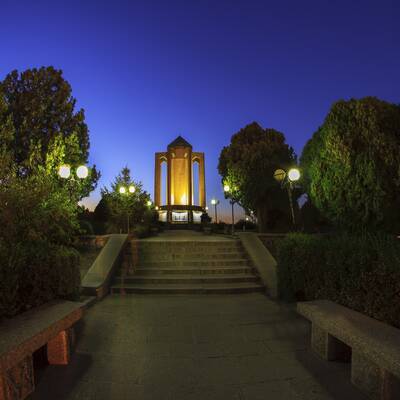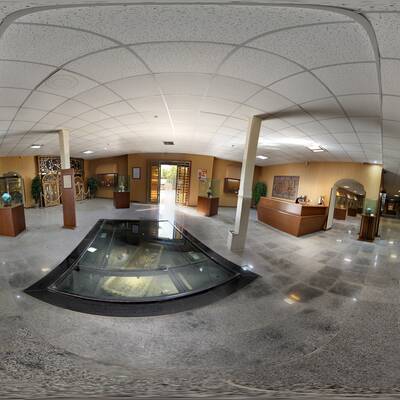Ganjnameh waterfall is located near the city of Hamedan, on the slopes of Mount Alvand, very close to the Tarik Valley and the Kivarestan Valley. It is places inside the Abbas Abad Valley, downstream of the Yakhchal mountain, and next to the Ganjnameh inscriptions. After carving the Bisotun inscriptions, Ganjnameh petroglyphs were also prepared by the order of Darius the Great, the Achaemenid king.
There is also an inscription left from Xerxes I, on the right side of Darius's monument. Each of the two has been carved in three columns, with three lines of ancient Akkadian and Persian cuneiform. They have been named the Ganjnameh, Jang-Nameh (the story of the war) and Nebesht-e Khodayan (something written by the gods). "The Great God is Ahuramazda who created this land, who created the people, who created happiness for the people, who made Darius the king ...".
The Ganjnameh waterfall is twelve meters tall. There are some pits at the bottom of the waterfall which have been caused by the water pressure, over the course of time. The waterfall then builds the Ganjnameh River, which goes up to six kilometers away, watering the plains and surrounding gardens.
The waterfall has water throughout the year, while it freezes during the winter. The name of this waterfall has been registered in the list of natural monuments of Iran. The geological structure of Alvand shows the granite, quartz and limestone rocks, going back to the Cretaceous era, nearly 100 million years ago. It is situated inside the calcareous structure of Qom. The vegetation around the Ganjnameh waterfall include plants such as thyme and rhubarb.
The tourism sector has built a 1680 -meter telecabin, near the waterfall, hanging at a height of 800 meters. An amusement park, café, restaurant and hostel can also be found here. In addition, you can see ice climbers in the winter and mountain climbers in the summer, taking advantage of this wonderful site.

.jpg)
_0.jpg)
-k-main.jpg)


